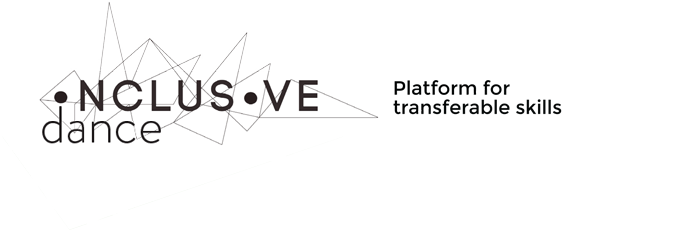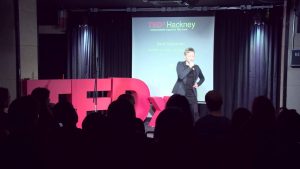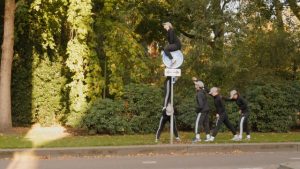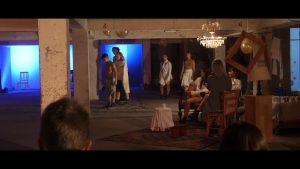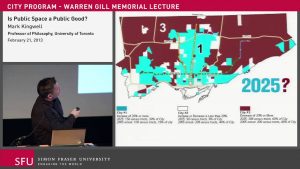Frank Bock was a founding member of The Featherstonehaughs (1987-2011), and co-artistic director of Bock and Vincenzi (1995-2007) a project-based company which created six productions. From 1999-2007 he researched and developed a body of work with Simon Vincenzi under the title invisible dances, in which perception, memory, communication, death and disappearance were recurring themes. As a performer Frank worked with Graeme Miller, Wendy Houstoun, Miranda Pennell, Bobby Baker and Rosemary Lee. He was Education Officer with the Cholmondeleys (2003-2008), then Creative Associate from 2008-2011, producing creative projects and developing workshops on self-leadership. For many years he has been giving artist feedback, mentoring as well teaching and is currently working at DOCH in Stockholm on the Masters in New Performative Practices. Since 2006 Frank has been practicing as psychotherapist and supervisor in private practice, as well as in the charity sector. From 2012 he has been working as a curator at Independent Dance, putting together several festivals and the program of talks called Crossing Borders.
Frank, I am curious to know how you got attracted to dance and decided to pursue a career in it.
Frank: It came quite late. I was never stage struck. I was already in my late teens. Although there is one memory when I was younger. I used to listen to music. My parents would take me to classical chamber music concerts. I remember sitting in the back and imagining what it would be to leave my seat and fly around the room. There was a relational element to that. Part of me wanting to surprise or shock people. But there was also something very personal about it. It was a way of filling the time. I was very young. I never translated that as a wish to be on stage or to dance. But it was a kind of first seed.
I was brought up in a family that was quite politically engaged – for instance with the ANC-struggle in South-Africa – so I wanted to study third world politics at the School of African Asian Studies in Sussex. I had got a place there but I wasn’t sure and I kept deferring and then a school friend invited me to take some dance classes. I was already 18 at the time. I remember also seeing Twyla Tharpe’s Catherine Wheel on television and there was something about that, which caught me probably at a developmental time where ambiguity felt necessary and exciting. It felt like being caught by dance, like in surfing, being caught by a wave. So I decided not to go to Sussex and I came to London instead and auditioned at various dance schools. I got in at Laban at the age of 21 with very little experience. Being a guy, the entry standard was more generous. But even then I never considered being a dancer. I just enjoyed studying movement and I thought that if I learnt enough about this thing called movement, I would eventually be able to do something with it.
In dance school I had already a particular relationship with the image, the metaphor, how you articulate something by saying it is like something else. I enjoyed trying to articulate my experiences, trying to describe an aesthetic experience. I was not very strong technically so I was always pushed to choreography. I struggled a lot in my training. My teachers told me ‘you won’t be a dancer’ but at the same time some were very supportive. They respected my wish to be there. And then after I graduated, I did find myself dancing for the next fifteen years. I found my way to work with movement that wasn’t necessarily from the prescribed body that has a certain facility. I was acutely aware it was always a thinking and doing body.
It was in the mid 80’s when a lot of small, new dance companies were being formed. There were a lot of opportunities for artists to set up small businesses, which in the UK was stimulated under the Enterprise Allowance Scheme. Small companies were emerging around individual choreographers and I joined Lea Anderson who founded an all-male company, The Featherstonehaughs, as well as an all-female company, the Cholmondeleys. We would alternate between working separately or all together. I joined them at the very beginning in 1987 and stayed with them till the very end in 2011 in different roles and guises.
I also began making my own work. In dancing I had particularly enjoyed and explored transitions, the in between moments: the coming on and going off stage; the going into or coming out of a stylized movement. I enjoyed that thresh hold. I was also interested in the relationship between producing movement and developing a reflexivity on it as opposed to performing a movement that was given to you. I was always more interested in that process.
In the more than 20 years that I stayed with the company I had different roles as I said earlier. From 1987 till 1998, I performed with them and then I became their education officer. It is funny how in this country after the war a lot of functions and office jobs were given military titles, like education officer. At the end, I had this very open role and title of being a creative associate. I would for instance organize workshops in leadership for the company. Also around that time, I started to develop an interest in psychotherapy and I decided to go studying again.
What motivated that decision?
Frank: It was a kind of mid-thirties developmental time of looking for something else to do, outside of dance. From a young age, I had some enduring images of the potency of therapy. I didn’t really know what it was, but I was fascinated by the idea of it. I found this confessional relationship very intriguing. It was also in particular inspired by an uncle called Hans with whom I had really great conversations with in his study, when I was in my teens. These were formative experiences of a talking relationship.
It seems that they were very strong links between your dance career and this new field. When we originally met, I remember you had an interest in group psychology which was very much connected to the experience of collaborating in larger groups in a dance company.
Frank: There always was a strong link with my dance work. In my own work with Simon Vicenzi, we worked for years researching where the body could go within itself and how images were produced. From 1999 till 2007, we made a series of research blocks that culminated at different points. We were working with perception: looking at falling inside of the body; sensory work in the studio; trying to open up interior spaces. We spend a lot of time watching traces of things or watching performers loose themselves in very abandoned and beautiful ways. There is something about that, which is very much like the therapeutic process, which to me is also an aesthetic process. It is about watching movements, textures, qualities and the felt sense of something.
I choose within psychotherapy a modality which was phenomenological and existential; where you didn’t arrive with preconceived ideas about some one’s psychic content. It was more about people being open to the world and manifest themselves through their interactions with the world. I very soon realized that sitting at the side in a studio watching something develop artistically, is very similar to sitting in a therapy session. You watch something emerge. You participate in supporting this emerging. It is not yet out there. It is the in and the out, I mentioned before. It is still blurred. You need a lot of patience to watch something, where it goes, without you too much interfering. I was using the same skills in the studio as in the therapy session. The only difference was that in the therapy session, I was sitting and not wearing loose clothing!
For me as a dance dramaturg, I also developed an interest in psychology and studied it because it felt it was an important tool in my work, accompanying artists. For instance, I learnt about being more patient and not interfering from the French psychiatrist Francois Roustang, who wrote a manuel for psychotherapist with as a title, Etre Patient – Being patient. That was an eye-opener for me as a dramaturg, learning to hold back.
Frank: There is a lot of correlation between the kind of waiting, inviting, allowing, suspending that you use in an artistic process for something fresh to emerge and the therapy session. In therapy there is always a movement or an implied movement in process. When you are dealing with ambiguous experiences, there is often a directionality: it can be a relational thing or it is about reorienting, away from something; into something. It always implies direction. So as a therapist, I am also tracking movement, following where movement wants to go.
You started immediately bringing this new knowledge of psychology into the art world: in leadership courses; passing on the knowledge of group psychology as a workshop model for choreographers.
Frank: I was very clear that I didn’t want to do dance movement therapy when I retrained. I thought I was leaving the art form. But then I was still creative associate for the company and I started to think about how the dance studio is a protected environment for experimentation and play and how I could translate some of the existential, psychotherapeutic framing in the studio. So I started to give workshops for the company members, exploring through play where they were, both in their personal and professional lives. So although I originally thought I was exiting the dance world, I was very quickly able to come back to it, with a different language and different process that fitted very well in the studio environment.
Since then, you have continued doing so, often in a mentor role.
Frank: I had many conversations with amongst others Jonathan Burrows and Chrysa Parkinson amongst others about what we mean by ‘mentoring’. I am very interested in the notion of ‘a helpful relationship’, whether you call it ‘outside eye’ or dramaturg. We did some research on that in a lab on mentoring. Also exploring the tensions between when these roles are professionalized or just happen spontaneously in an existing relationship, without it having been set up by a production house.
I found myself also working as a curator for Independent Dance and I realized that I was more interested in organizing platforms for discussions rather than platforms for presentation, which is another thread in my work. I was also interested how very poetic things can co-exist next to more discursive ones. I was interested in curating new formats: to create openings for things to happen; open spaces and times which are not filled in but where people will be waiting and intersecting and unforeseen things will happen.
You also co-curated a long durational event over more than 80 days, which was part of an exhibition at the Hayward Gallery, Mirror City. How was this experience of bringing dance into the museum?
Frank: That was a very nice invitation from Stephanie Rosenthal who had already curated the exhibition Move: Choreographing You for the Hayward Gallery so she came with an interesting relationship to the art form. Mirror City was an exhibition on artists working in London and she invited me with two others, Martin Hargreaves and Nicola Conibere to curate the performance strand and we invited six other artists to present their work every day during the whole length of the exhibition, which was 82 days. We wanted to present practices rather than pieces. We didn’t want a stage area. We wanted the dancers to be within their practice all the time, regardless if there were spectators or not. The work was always unfinished. They were constantly investigating within it. They were working in in-between spaces: to open up space; to create space rather than being given space.
You also did another project at the Welcome Foundation on dance and disability?
Frank: I was accompanying Catherine Long who had a residence at the Wellcome Foundation and who was researching the links between neuroscience and dance; between language and body. We also organized a symposium with fellow collaborator Doran George at the end of that process. For this symposium we invited specialists from different fields and had them dialogue with each other but without them being named or the audience knowing form which discipline they came. Their expertise just emerged through the conversations they had.
Through my therapeutic work, I am also very much interested in the relationship between language and body. That language also emanates from the body. I recently also started to teach at the MA-program in New Performance Practices at DOCH in Stockholm, which is led by Chrysa Parkinson. The student’s backgrounds are mostly dance but also include a mix of those with other practices. I teach choreography and discursive practices: for instance working on the group dynamics as a way of learning; how they talk with each other; the ethics of listening; how can they talk about their experience not only in the language of academic discourse.
If I look at my role as a teacher, there is a big shift from my own experience as a student at Laban. The teacher now is more an activator than an expert, which is again similar to the therapeutic setting. My own vulnerability and my own potential failure are always also present in the room and rightfully so.
Can you expand more on your role as a dance educator compared to your own experiences as a student?
Frank: I wish I had gone to an art school. I missed that level of studio play that I discovered as a maker or performer. I was already older when I started my dance training and I didn’t come from a culture of going every Saturday morning to ballet class. So I struggled a lot with the conservatory training. I missed the mess of art school and playing around with different materials. In Sweden we can play with different forms of education to invite the content. To also bring choreographic thinking into the setups of pedagogic space.
What are your plans for the future?
Frank: I want to further research cultures of independence. I have also been programming Crossing Borders Talks at Independent Dance. I am attracted by the culture of that organization. I am interested in the topics we have been discussing here: How people can apply their training in other ways? How do they make their work sustainable.
I continue to do more training and studying in therapy. At present I am training to work more deeply with trauma, finding myself doing more somatic work. Having done some of the somatic work from a therapeutic perspective, I find myself really relinking to dance and the body in different ways. To some extent neuroscience is validating this introspection in the body as an incredible skill of investigation and aliveness: to be more present and to be more alive.
London, February 2016
Photocredits: Frank de Bock by Hugo Glendinning
